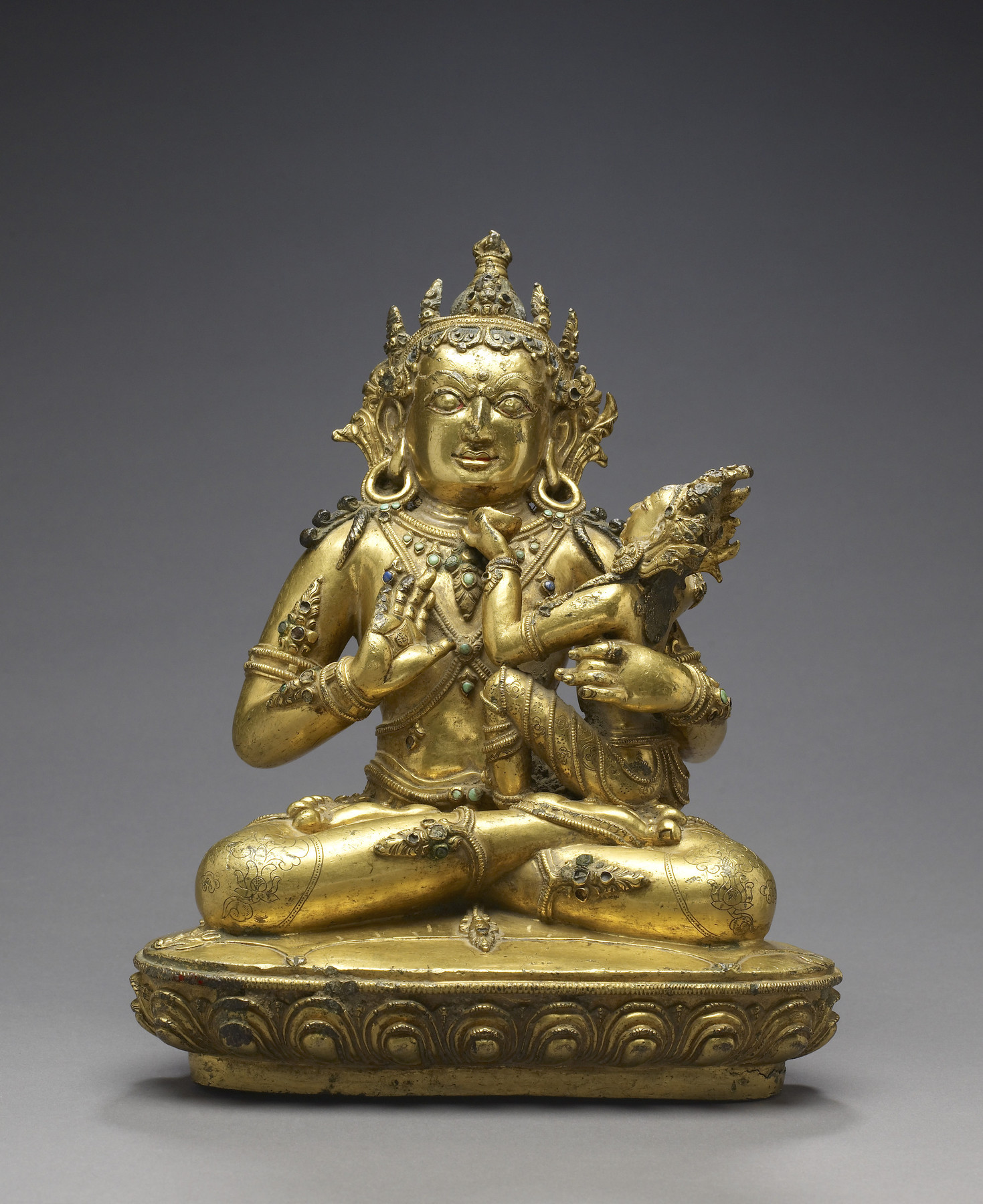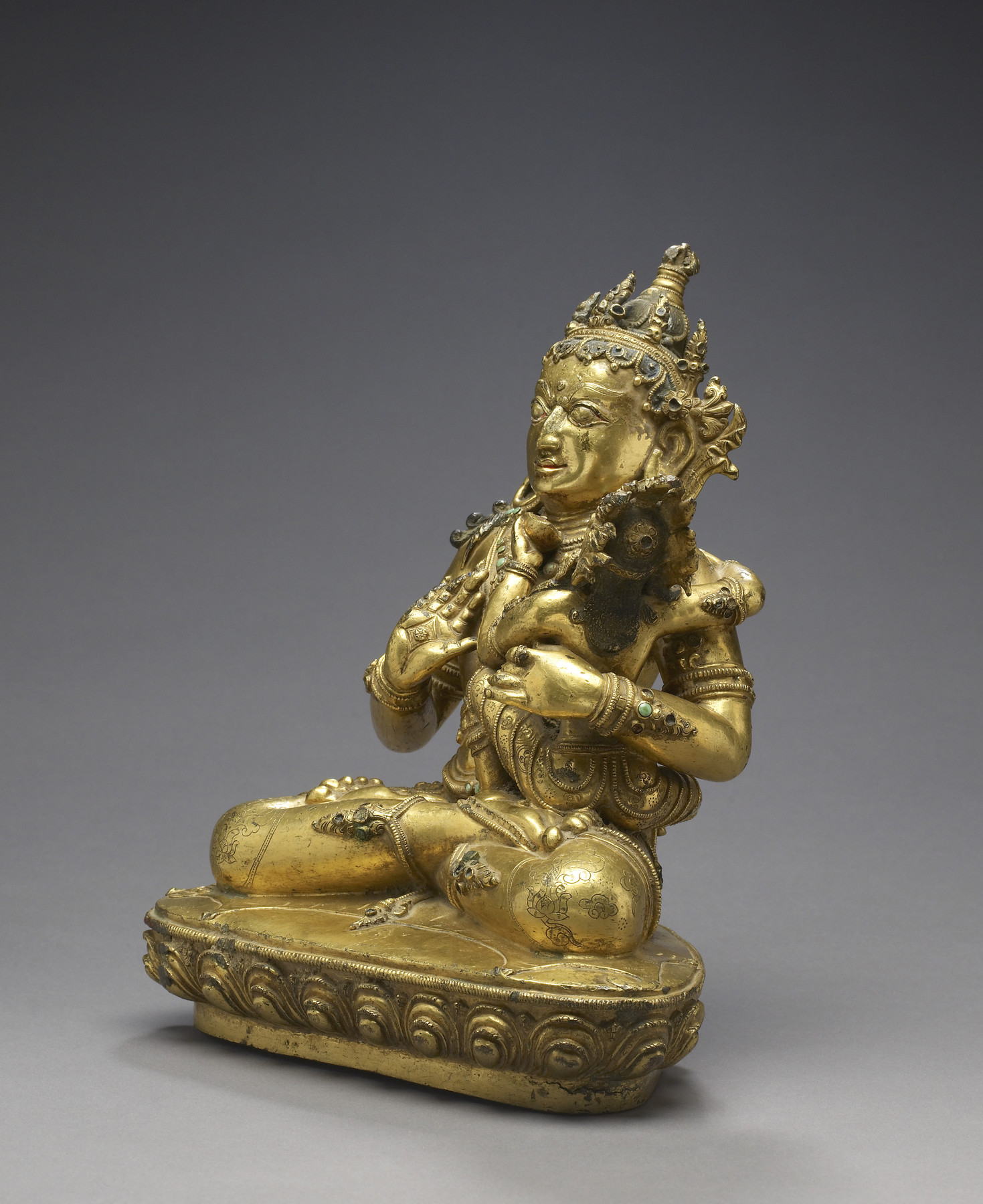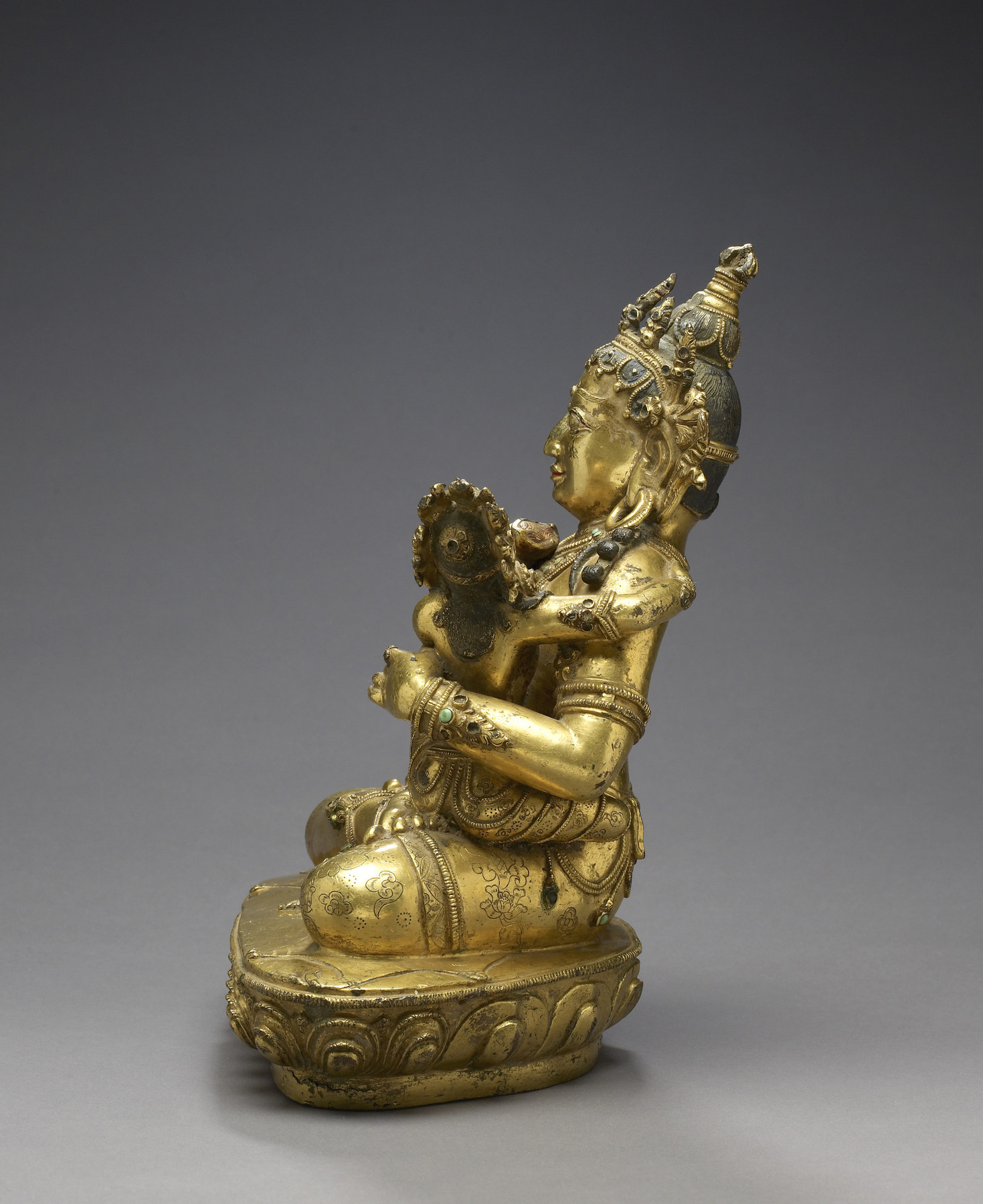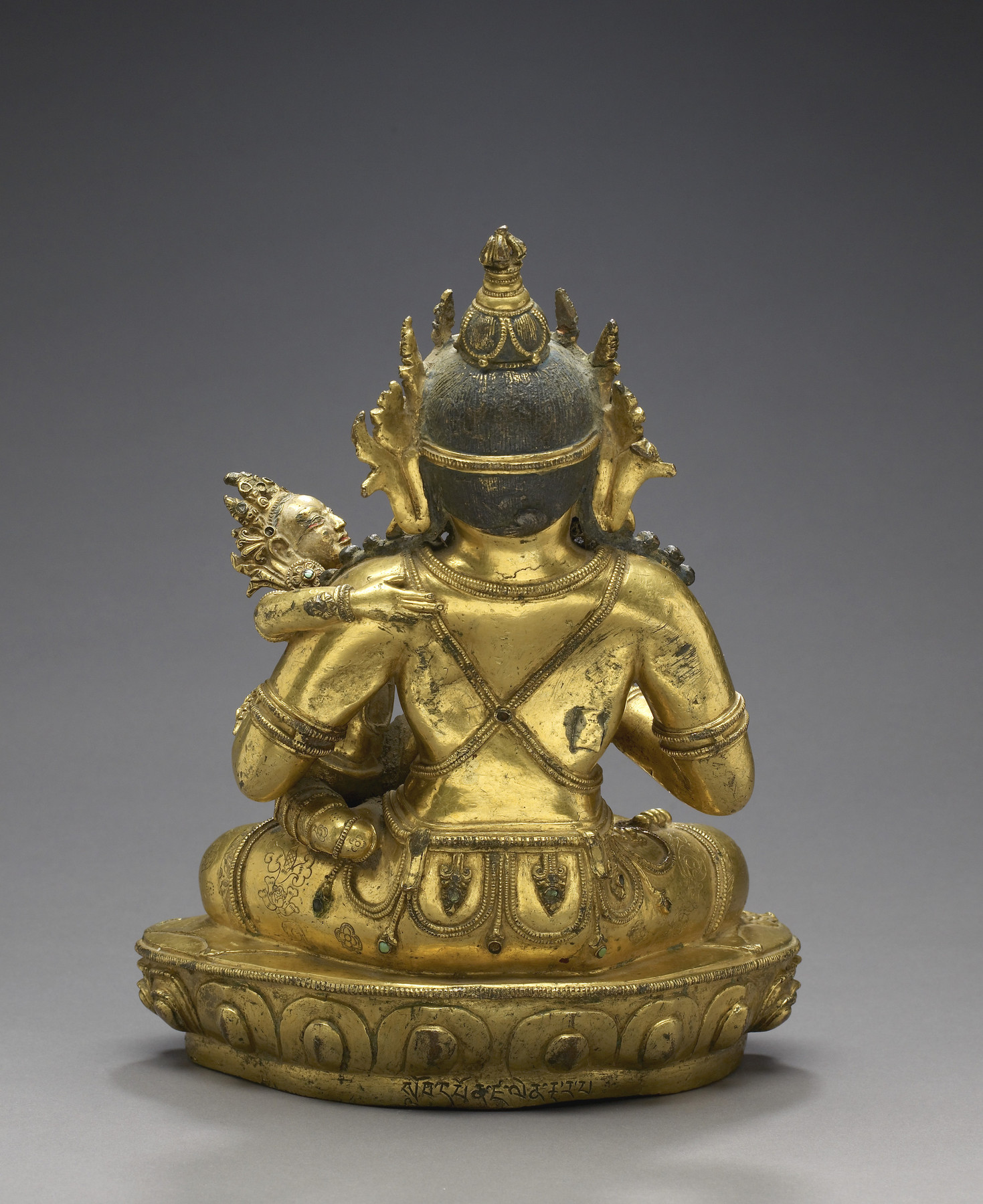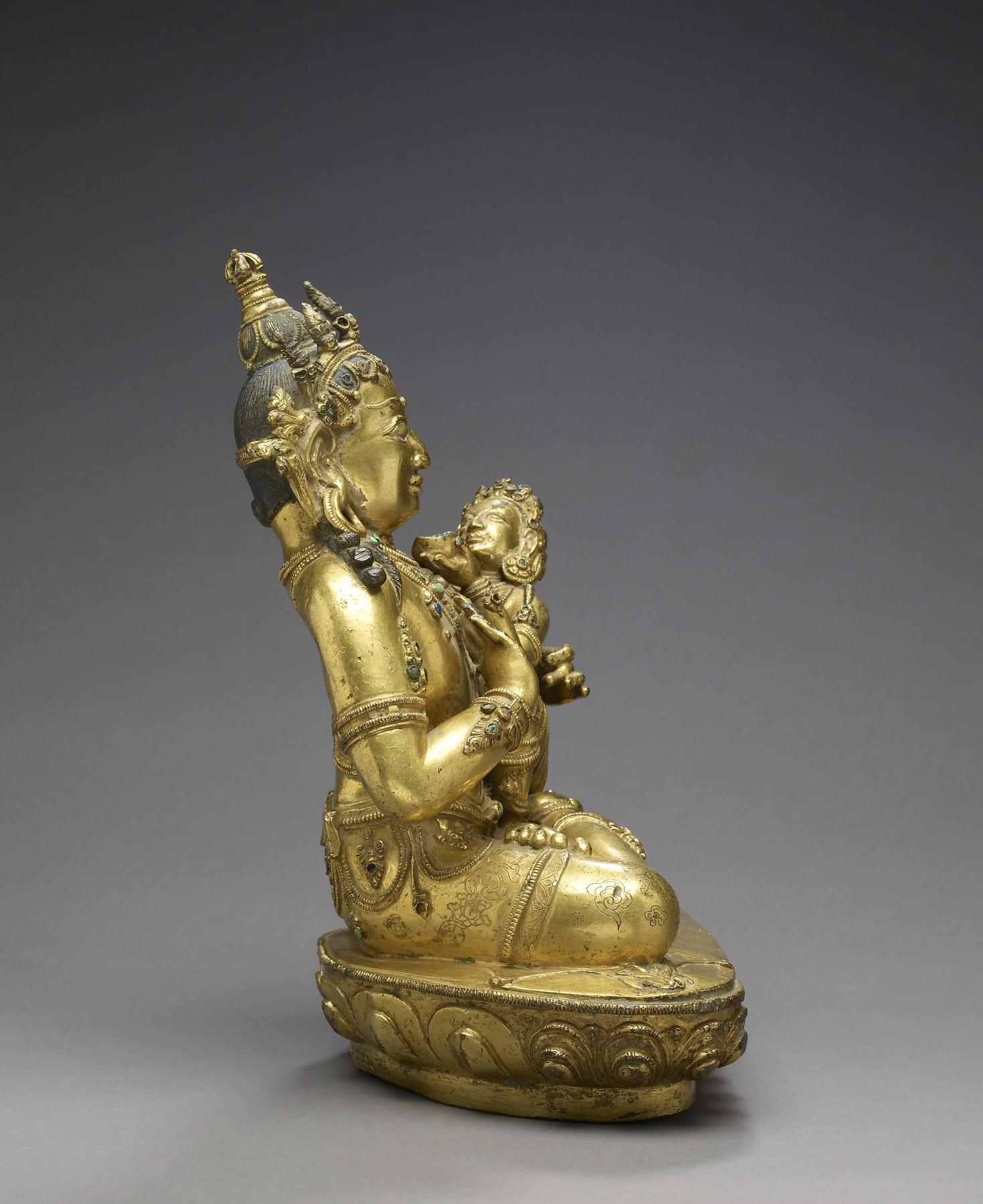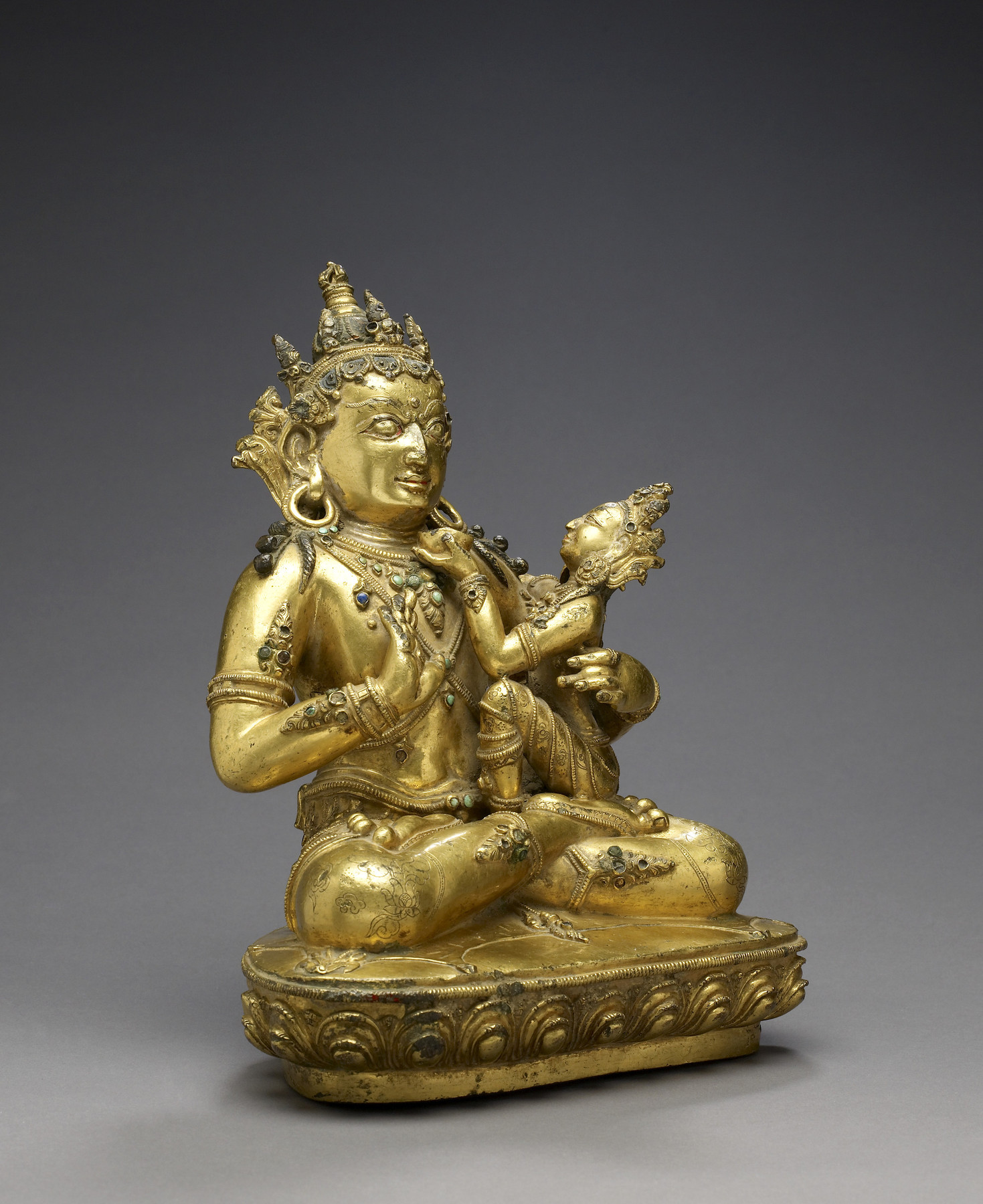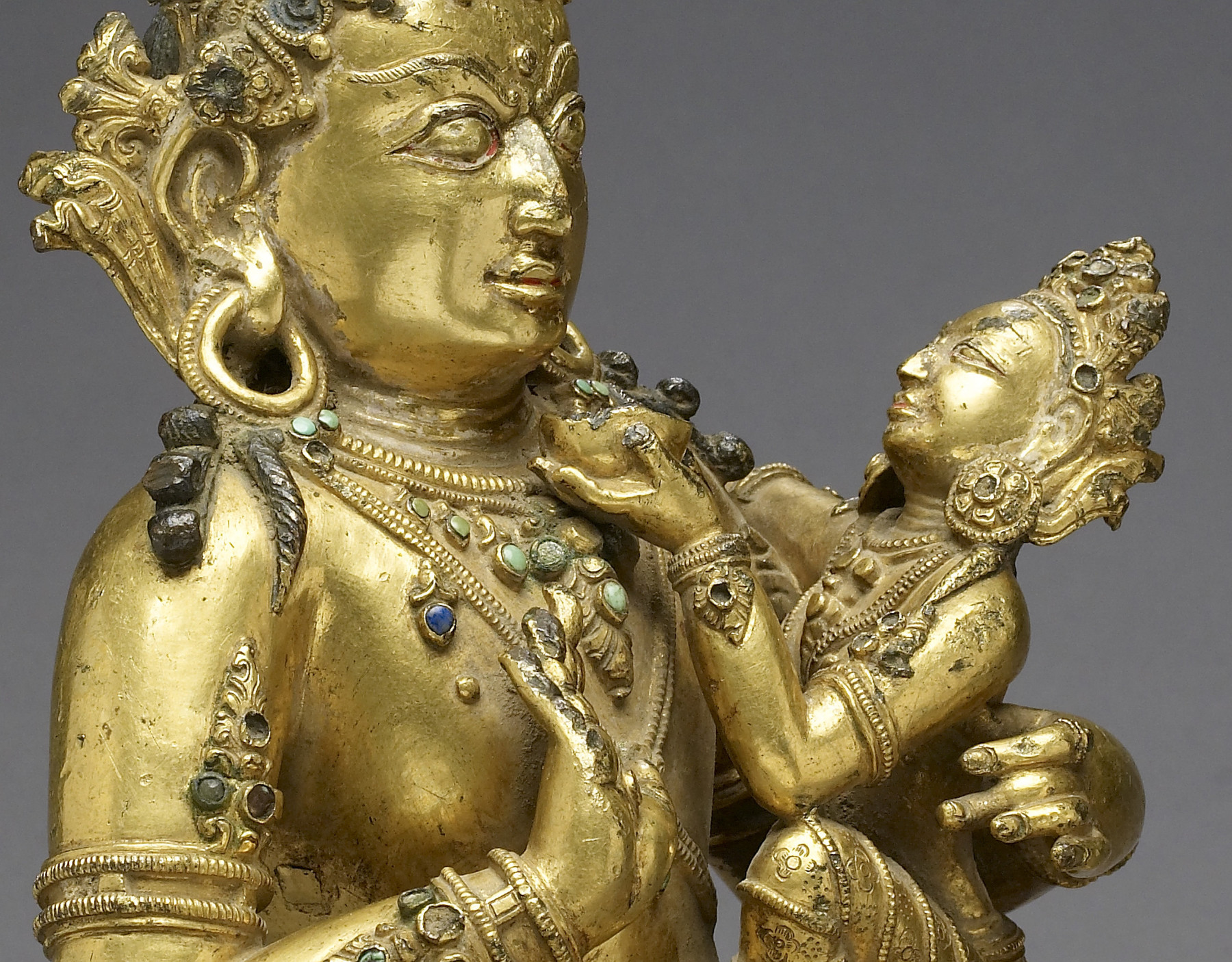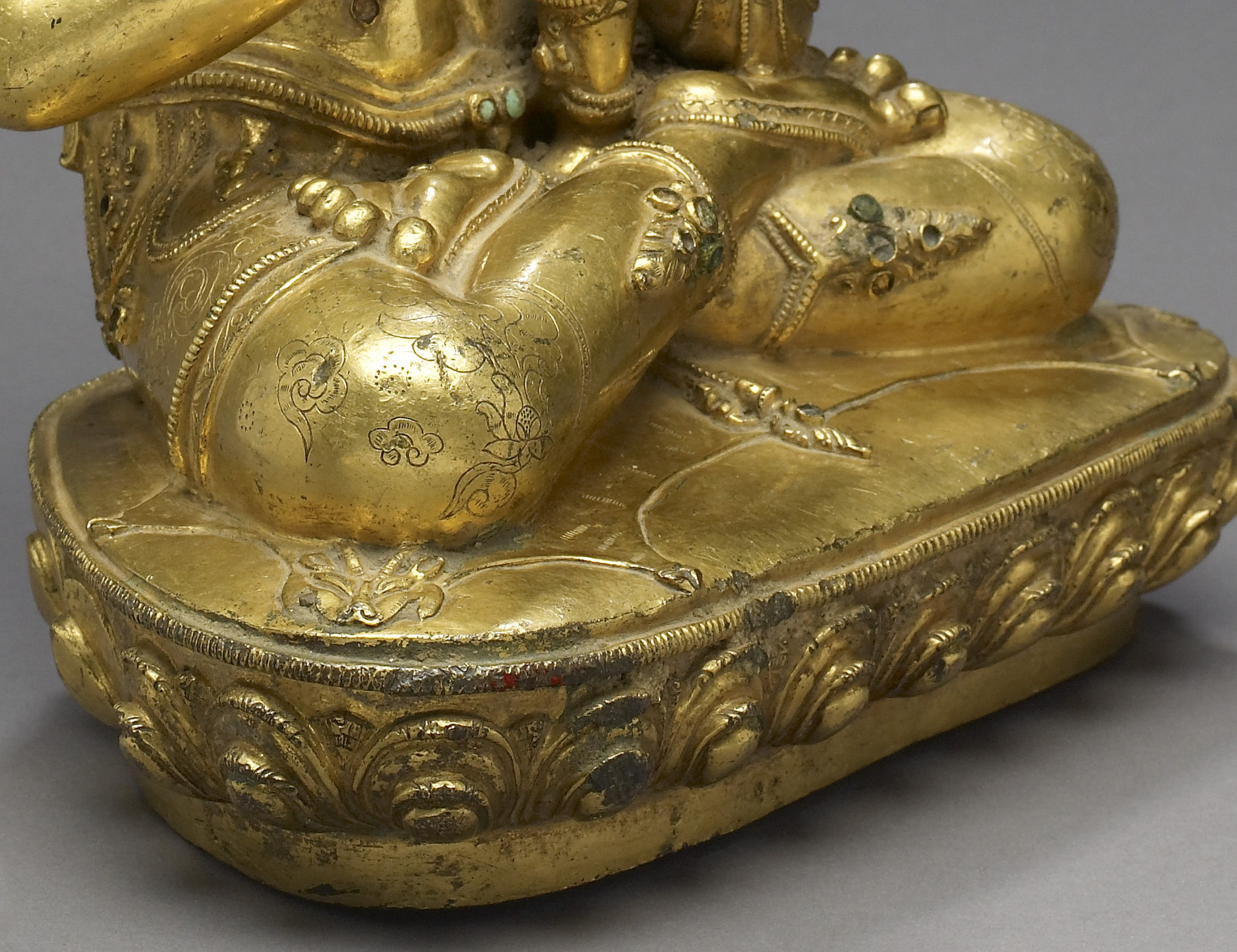Mahasiddha Jalandharapa
(India, Nepal, and Tibet)
An inscription on the back of the base identifies the male figure of this pair as Jalandharapa, one of the eighty-four Tantric Buddhist "mahasiddhas": spiritual adepts who have attained great powers and have reached a state of enlightenment, usually through a rejection of societal norms. Here, a female consort sits on Jalandharapa’s left thigh and offers him a skull cup filled with blood. In Tantric Buddhist symbolism, both skull cups and female partners are identified with wisdom and enlightened knowledge, and this consort may allude to the "dakini" (goddess or female ritual partner) who imparted to Jalandharapa the teachings that led to his enlightenment. Both figures wear an abundance of jewels and lower garments incised with fine patterns that represent textile designs. Such adornment is not typical of the characteristically ascetic “mahasiddha appearance,” but the antelope skin on which Jalandharapa sits, the skulls on his diadem, and his intense, red-rimmed stare—indicative of his heated inner power—are consistent with other depictions of mahasiddhas. The multipronged "vajra" finial that crowns his topknot is a symbol of the Tantric Buddhist traditions and the indestructibility of their teachings, and reinforces the religious affiliation of the sculpture.
Inscription
Provenance
Provenance (from the French provenir, 'to come from/forth') is the chronology of the ownership, custody, or location of a historical object.
Ian Alsop, New York and Santa Fe; purchased by John and Berthe Ford, Baltimore, June 1970; given to Walters Art Museum, 2016.
Exhibitions
| 2006 | Holy Madness: Portraits of Tantric Siddhas. Rubin Museum of Art, New York. |
| 2001-2003 | Desire and Devotion: Art from India, Nepal, and Tibet in the John and Berthe Ford Collection. The Walters Art Museum, Baltimore; Santa Barbara Museum of Art, Santa Barbara; Albuquerque Museum, Albuquerque; Birmingham Museum of Art, Birmingham; Hong Kong Museum of Art, Hong Kong. |
Conservation
| Date | Description | Narrative |
|---|---|---|
| 8/14/2004 | Examination | examined for loan |
Geographies
Tibet (Place of Origin)
Measurements
H: 10 × W: 8 1/4 × D: 6 3/4 in. (25.4 × 21 × 17.1 cm)
Credit Line
Gift of John and Berthe Ford, 2016
Accession Number
In libraries, galleries, museums, and archives, an accession number is a unique identifier assigned to each object in the collection.
In libraries, galleries, museums, and archives, an accession number is a unique identifier assigned to each object in the collection.
54.3102

